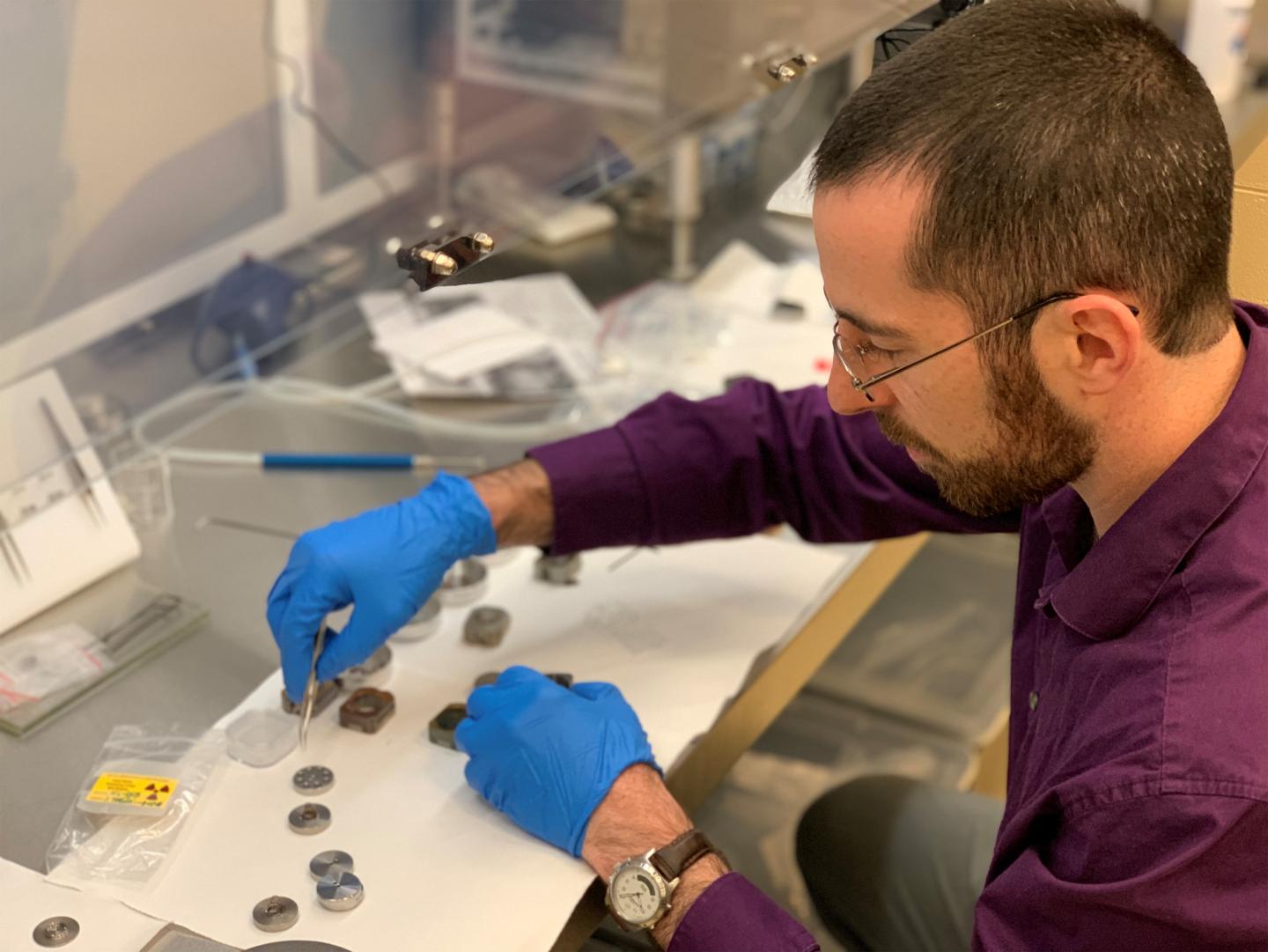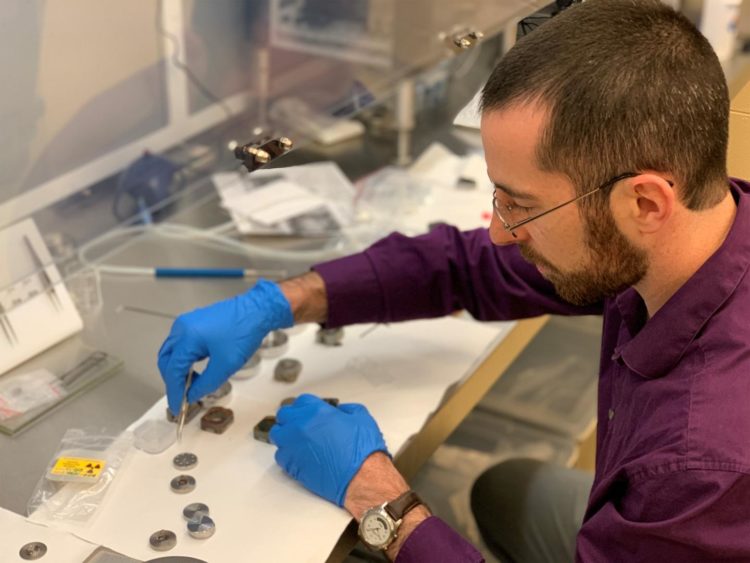
Credit: (U.S. Navy photo by Nicholas E. M. Pasquini)
WASHINGTON – Researchers with the U.S. Naval Research Laboratory (NRL) designed and built an instrument called NAUTILUS to provide new measurement capabilities unlike those available at other laboratories to measure nuclear, cosmo/geo-chemical, and electronic materials.
At the end of last year, NRL participated in an international round-robin exercise, called Nuclear Signatures Inter-laboratory Measurement Evaluation Program (NUSIMEP-9), sponsored by the European Commission (Nuclear Safety and Security Division) to measure microscopic particulate samples with “unknown” uranium isotope ratios.
“NRL recently received the final report from the international round-robin exercise and found that the Laboratory performed quite well, correctly identifying all of the “unknown” isotopic compositions,” said David Willingham, a research chemist and head of the Accelerator Mass Spectrometry Section. “In this case, NRL used a globally unique mass spectrometer called NAUTILUS to perform these measurements, as part of the Accelerator Mass Spectrometry Section’s participation in the NUSIMEP-9 sample analysis exercise.”
The NUSIMEP-9 test samples were prepared to mimic environmental sampling/nuclear Safeguards missions, such as those performed by the International Atomic Energy Agency (IAEA). The exercise was conducted for the IAEA’s Network of Analytical Laboratories (NWAL), of which NRL is not a member; however, NRL does collaborate with the laboratories to develop better uranium-bearing particle analyses.
The IAEA is responsible for deterring the proliferation of nuclear weapons by detecting early the misuse of nuclear material or technology, and by providing credible assurances that states are honoring their safeguards obligations. The analysis of nuclear material samples and environmental samples taken by IAEA inspectors is an essential component of this undertaking.
Twenty-two other laboratories were involved, many of which perform these types of measurements as their core mission (e.g., IAEA) with their instruments dedicated solely for these types of measurements.
“The NAUTILUS is much more flexible than this single type of measurement – we use it to analyze a wide variety of material compositions, including nuclear, electronic, and extraterrestrial materials,” said Evan Groopman, a research physicist. “We are happy with the results of this exercise because it demonstrates that our up-and-coming group can both build a novel instrument for the Navy and apply it to a wide variety of problems, performing as well or better than laboratories that exclusively perform a single type of analysis using commercial instrumentation.”
A key element of the safeguards system is the physical inspection of nuclear facilities by IAEA inspectors. States declare in considerable technical detail the types and quantities of nuclear material they possess. Among other verification measures, IAEA inspectors may take nuclear material samples from various points of the nuclear fuel cycle and collect environmental samples by swiping surfaces at various locations during the conduct of a verification activity.
These samples, which may be in solid, liquid, or gaseous form, are then subject to sophisticated analysis by IAEA scientists. The scientists focus on the isotopic make-up of uranium and plutonium contained
in the samples, unaware of the country from which they were obtained. The analytical results provide a powerful tool for supporting conclusions as to the correctness and completeness of states’ nuclear material declarations and help to inform the IAEA’s evaluation of whether a state is complying with its safeguards obligations.
In carrying out this work, the IAEA laboratories coordinate and cooperate with a wider Network of Analytical Laboratories (NWAL), comprising an additional 18 laboratories located in nine different IAEA Member States. The Environment Sample Laboratory in Seibersdorf, Austria receives and screens all swipe samples but then shares the analytical workload with its NWAL partners.
###
The final report from the NUSIMEP-9 exercise can be found, here: https:/
About the U.S. Naval Research Laboratory
NRL is a scientific and engineering command dedicated to research that drives innovative advances for the Navy and Marine Corps from the seafloor to space and in the information domain. NRL headquarters is located in Washington, D.C., with major field sites in Stennis Space Center, Mississippi, Key West, Florida, and Monterey, California, and employs approximately 2,500 civilian scientists, engineers and support personnel.
Media Contact
Nicholas E. M. Pasquini
[email protected]
202-404-4958
Original Source
https:/





